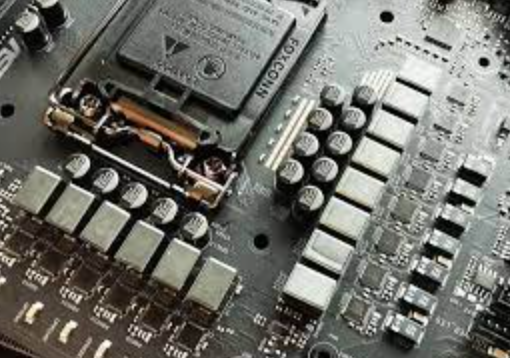Tech
What You Should Know About Motherboards

Large printed circuit boards, or “motherboards,” are a standard component of personal computers (PCs). There is a casing for these PCs, which houses all of its components. The motherboard is located within the PC casing. The motherboard contains all of the components necessary to build a computer system. We’ll go into great detail regarding motherboards in this article.
Motherboard Major Components
Contents
Major Motherboard Components
A Motherboard’s Features You Need to Consider
Gaming-specific motherboards
In the end,
The main memory (RAM) is one of the most important parts of the mainboard. It’s a non-volatile memory that holds data until the PC is turned off. During the course of a task, data is put into the RAM and remains there until the activity is completed. In the future, you may want to enhance your PC’s RAM capacity.
Additionally, the motherboard has a CPU, or central processing unit. There are several mathematical and logical functions that it does. The programmers here do the calculations. Once we get through it, we get the GPU (graphics processing unit). To connect external devices, such as a mouse or keyboard, you’ll also discover USB connections.
This is a crucial component that lets you to install suitable devices, such as network and video card.
It’s important to note that Pro Tech Reviewer is a place for tech enthusiasts to share their thoughts.
A Motherboard’s Features You Need to Consider
When shopping for a motherboard, don’t forget to consider things like the chipset, the size, the amount of ports, and the pricing. Below, you’ll find a detailed explanation of each one:
Size/Form is a consideration.
To put it another way, a motherboard’s “form factor” refers to its physical dimensions. From ATX to Mini-ITX, the form factor and number of expansion slots differ. In comparison to mini-ITX motherboards, larger motherboards often offer more expansion slots. Make sure your motherboard is compatible with the casing you’ve purchased for your PC.
Socket
Sockets come in two flavors: Intel’s LGA and AMD’s AMP. It refers to the pins on a motherboard that may be used to connect integrated circuits or other components. Adding to that, it ensures that the processor is where it should be. Processor options will be limited based on the type of socket you’ve selected. To ensure compatibility, check the processor’s socket.
Chipset
An electrical chipset is used to transfer data between motherboard components. Either integrated or built-in chipsets are available. In the end, what you pick as a chipset influences the performance of the system. The chipset that best fits your needs and budget should be selected. Z370, AMD x570, and Intel Z390 are the most often utilize chipsets. Remember that the socket type must match the chipset.
A source of electricity.
The motherboard’s power supply is not directly connected to the wall. An external power supply is used to convert the AC power supplied by the motherboard to DC power required by the motherboard components. Find out if your board consumes more power than the USB ports built-in to your computer
This means you’ll need to buy more headers or ports if it does happen. CPU, RAM and GPU all play a role when purchasing a motherboard. Similarly, you should make sure you have the correct power supply in order to get the most out of your computer.
Instances in which
You can connect your phone to the internet via Wi-Fi or via Bluetooth without having to worry about a lack of connectors. How many wired and wireless peripherals your computer can support is determined by the number of wired connections it has.
Gaming-specific motherboards
The amount of ports, a Graphics Card, cooling fans, and the processor are all important considerations when purchasing a motherboard for gaming. There are motherboards specifically intended for gaming. Because significant overclocking is required for gaming, a robust cooling system must be in place to keep the system from overheating, which would have a negative impact on performance.
For smooth gaming, you’ll also need a good graphics card and a strong CPU with a clock speed of 3.5 GHz – 4.0 GHz and RAM of at least 8GB and a maximum of 16GB.
In the end,
After reading this article, you’ve learned that the motherboard is one of the most important parts of a computer that ensures it runs smoothly and lasts a long time. If you’re shopping for a motherboard for everyday use or gaming, keep these things in mind so you don’t wind up kicking yourself later on for overspending.




![[pii_email_4c910535350b5a41ee81] Error Code Resolved](https://wigily.com/wp-content/uploads/2020/09/pii_email_4c910535350b5a41ee81-Error-Code-Resolved.jpg)
